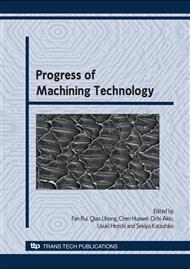p.198
p.202
p.207
p.211
p.216
p.220
p.225
p.230
p.234
Automatic Process Learning to Restore Omitted 2D Drawings
Abstract:
Though solid modeling becomes essential to research present CAD systems, a great many small companies still use 2D CAD systems. So, automatic conversion systems between them have been desired for many years. Most of proposed methods could apply to only correct 2D drawings in geometry. However, simplified drawings are usually used in actual design. In our method, the relationships of lines in 2D drawings could be acquired as properties. So, when a user operates broken lines to make correct lines, the processes of operations can be learned and generalized by using the properties, and generalized processes can be applied to new broken lines of 2D drawings.
Info:
Periodical:
Pages:
216-219
Citation:
Online since:
February 2009
Authors:
Keywords:
Price:
Сopyright:
© 2009 Trans Tech Publications Ltd. All Rights Reserved
Share:
Citation:


